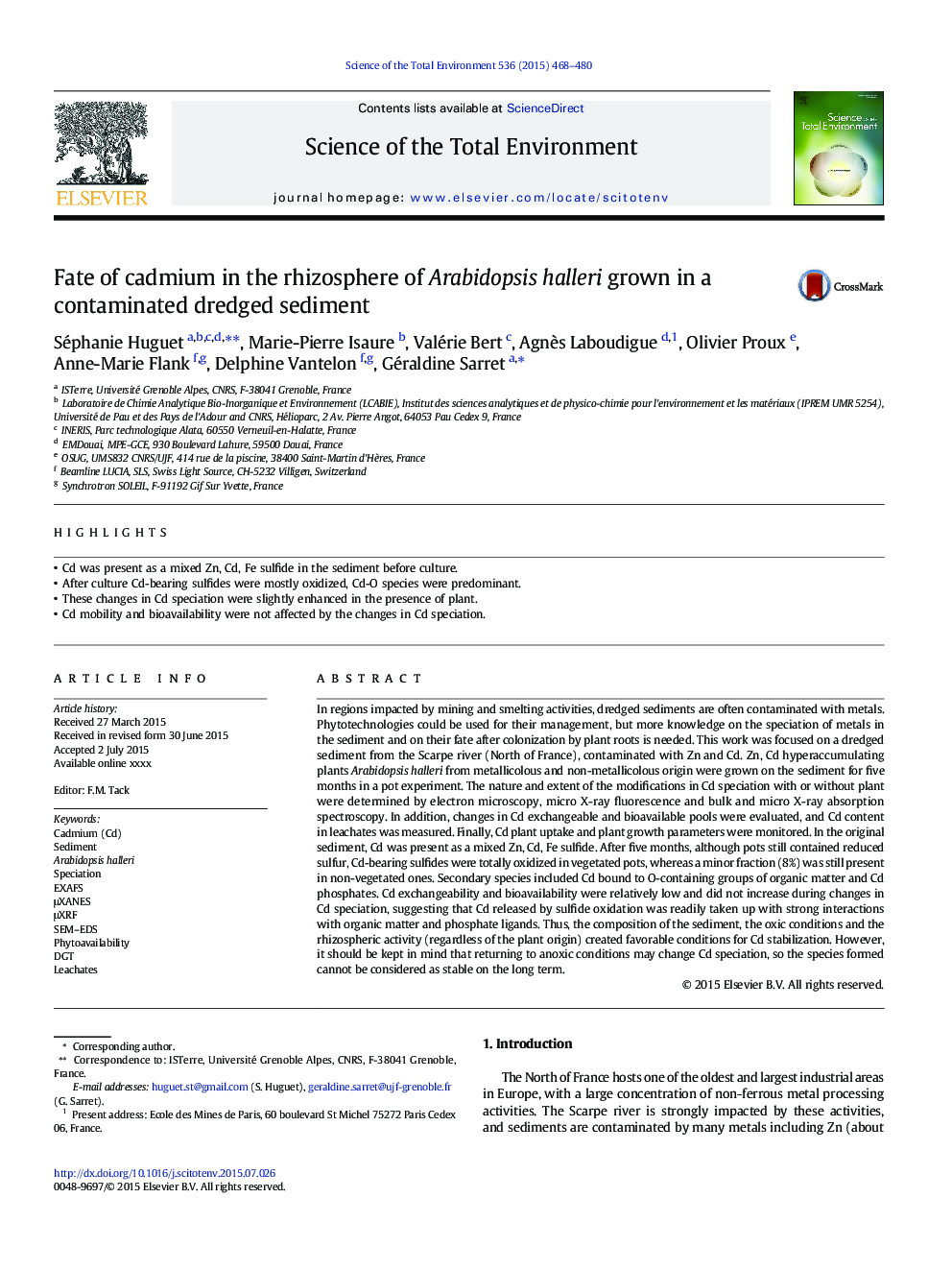| کد مقاله | کد نشریه | سال انتشار | مقاله انگلیسی | نسخه تمام متن |
|---|---|---|---|---|
| 6325975 | 1619748 | 2015 | 13 صفحه PDF | دانلود رایگان |
عنوان انگلیسی مقاله ISI
Fate of cadmium in the rhizosphere of Arabidopsis halleri grown in a contaminated dredged sediment
دانلود مقاله + سفارش ترجمه
دانلود مقاله ISI انگلیسی
رایگان برای ایرانیان
کلمات کلیدی
موضوعات مرتبط
علوم زیستی و بیوفناوری
علوم محیط زیست
شیمی زیست محیطی
پیش نمایش صفحه اول مقاله

چکیده انگلیسی
In regions impacted by mining and smelting activities, dredged sediments are often contaminated with metals. Phytotechnologies could be used for their management, but more knowledge on the speciation of metals in the sediment and on their fate after colonization by plant roots is needed. This work was focused on a dredged sediment from the Scarpe river (North of France), contaminated with Zn and Cd. Zn, Cd hyperaccumulating plants Arabidopsis halleri from metallicolous and non-metallicolous origin were grown on the sediment for five months in a pot experiment. The nature and extent of the modifications in Cd speciation with or without plant were determined by electron microscopy, micro X-ray fluorescence and bulk and micro X-ray absorption spectroscopy. In addition, changes in Cd exchangeable and bioavailable pools were evaluated, and Cd content in leachates was measured. Finally, Cd plant uptake and plant growth parameters were monitored. In the original sediment, Cd was present as a mixed Zn, Cd, Fe sulfide. After five months, although pots still contained reduced sulfur, Cd-bearing sulfides were totally oxidized in vegetated pots, whereas a minor fraction (8%) was still present in non-vegetated ones. Secondary species included Cd bound to O-containing groups of organic matter and Cd phosphates. Cd exchangeability and bioavailability were relatively low and did not increase during changes in Cd speciation, suggesting that Cd released by sulfide oxidation was readily taken up with strong interactions with organic matter and phosphate ligands. Thus, the composition of the sediment, the oxic conditions and the rhizospheric activity (regardless of the plant origin) created favorable conditions for Cd stabilization. However, it should be kept in mind that returning to anoxic conditions may change Cd speciation, so the species formed cannot be considered as stable on the long term.
ناشر
Database: Elsevier - ScienceDirect (ساینس دایرکت)
Journal: Science of The Total Environment - Volume 536, 1 December 2015, Pages 468-480
Journal: Science of The Total Environment - Volume 536, 1 December 2015, Pages 468-480
نویسندگان
Séphanie Huguet, Marie-Pierre Isaure, Valérie Bert, Agnès Laboudigue, Olivier Proux, Anne-Marie Flank, Delphine Vantelon, Géraldine Sarret,